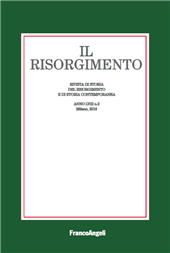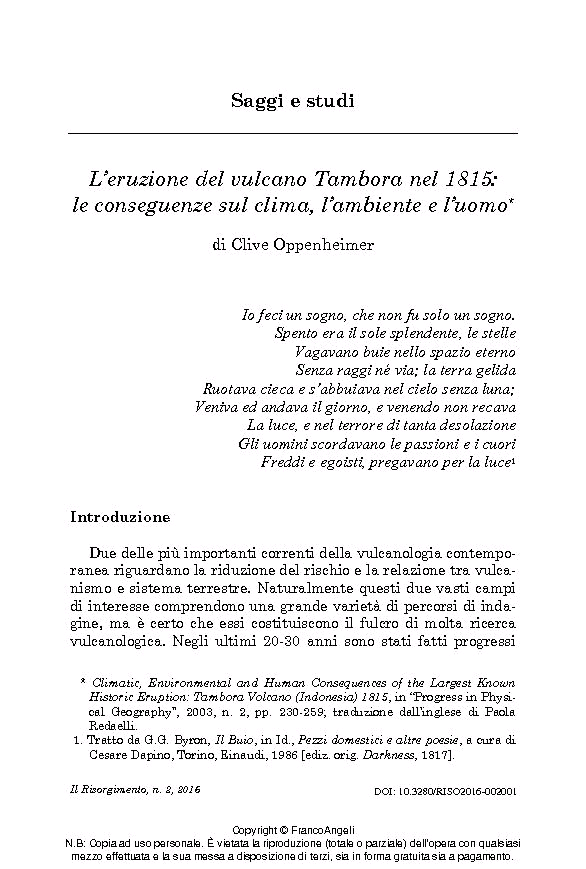L'eruzione del vulcano Tambora nel 1815 : le conseguenze sul clima, l'ambiente e l'uomo
7-53 p.
The 1815 eruption of Tambora volcano (Sumbawa island, Indonesia) expelled around 140 gt of magma (equivalent to 50 km3 of dense rock), making it the largest known historic eruption. More than 95% by mass of the ejecta was erupted as pyroclastic flows, but 40% by mass of the material in these flows ended up as ash fallout from the "Phoenix" clouds that lofted above the flows during their emplacement. Although they made only a minor contribution to the total magnitude of the eruption, the short-lived plinian explosions that preceded the climactic eruption and caldera collapse were powerful, propelling plumes up to 43 km altitude. Over 61.000 people died during, or in the aftermath of, the eruption, on Sumbawa and the neighbouring island of Lombok. The eruption injected âÂÂ60 m of sulfur into the stratosphere, six times more than was released by the 1991 Pinatubo eruption.
This formed a global sulfate aerosol veil in the stratosphere, which resulted in pronounced climate perturbations. Anomalously cold weather hit the northeastern Usa, maritime provinces of Canada, and Europe the following year. 1816 came to be known as the "Year without a summer" in these regions. Crop failures were widespread and the eruption has been implicated in accelerated emigration from New England, and widespread outbreaks of epidemic typhus. These events provide important insights into the volcanic forcing of climate, and the global risk of future eruptions on this scale. [Publisher's Text].
Ist Teil von
Risorgimento : rivista di storia del Risorgimento e di Storia Contemporanea : LVIII, 2, 2016-
Artikel aus derselben Ausgabe (einzeln erhältlich)
-
-
Informationen
ISSN: 2465-0765
THEMENBEREICHE
KEYWORDS
- Atmosfera, clima, Tambora 1815, vulcano, "anno senza estate"
- Atmosphere, climate, Tambora 1815, volcano, "Year wi-thout a summer"



